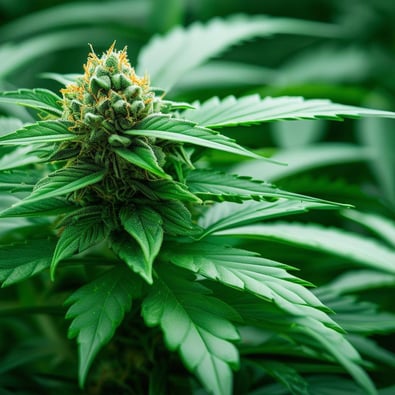Vermillion Growers, located in Manitoba, Canada, has recently completed a greenhouse project in collaboration with Stolze, a company specializing in greenhouse automation. The venture is led by Lucky Deschauer, Maria Deschauer, and Mark Kohan, the 3 founding members of the company, along with Cormac Foster, Vice President of Engineering and Development at Vermillion Growers. The greenhouse is designed to navigate the challenges posed by Manitoba's harsh climate.

The three founders of Vermillion Growers, Maria Deschauer, Mark Kohan, and Lucky Deschauer
Operating a greenhouse in Manitoba is no small feat. The region is known for its severe winters, characterized by heavy snowfall and freezing temperatures. These environmental challenges necessitated an innovative design approach to ensure the facility's long-term viability. "One of the biggest challenges we had to overcome," said Cormac, "was ensuring the greenhouse could handle the snow loads in winter. We worked closely with an international design team and local engineers to make the necessary adjustments to meet Manitoba's building codes, which are strict due to our extreme climate."

To address snow accumulation, which can cause structural damage, Vermillion Growers worked with the design team to develop a system that not only prevents snow from weighing down the greenhouse but also converts snowmelt into a valuable resource. "We set up a system to capture snowmelt and use it for irrigation," Cormac explained. This eco-friendly solution drastically reduces the need for municipal water during the winter months. The approach proved to be really efficient during their first growing season already as they repurposed the natural resource.

Climate control automation
A sophisticated climate control system maintains optimal growing conditions, as Vermillion Growers partnered with Priva, a provider of greenhouse automation technologies. The Priva system automates the control of various environmental factors, from temperature to humidity and light. This is crucial for managing the internal climate, especially when external temperatures can plummet well below freezing.

"The Priva system not only manages temperature but also controls the screening, condensation, and humidity. It's vital for keeping excess humidity from freezing on the inside of the roof during winter," Cormac noted. The high level of automation in the greenhouse ensures that plants thrive regardless of the harsh external environment, optimizing energy use while minimizing waste.

Three core systems
Cormac highlighted three advanced systems that form part of their automation:
The facility has installed a carbon dioxide (CO2) capture system that links to their natural gas boilers. "We capture the CO2 that's produced during combustion and send it back into the greenhouse," explained Cormac. "The plants absorb the CO2 for photosynthesis, which helps us boost yields while also reducing our greenhouse gas emissions." This system enables the company to close the carbon loop within the greenhouse, making natural gas usage more efficient and less harmful to the environment.

Energy efficiency is a top priority, especially in Manitoba's extreme climate. Vermillion Growers has worked with Svensson to implement a dual-layer screening system, which serves multiple purposes. "We use vertical screens on the greenhouse walls and double-layer horizontal screens at the roof, which include both energy and blackout screens," Cormac explained. "These help us improve our energy efficiency significantly and manage our energy use effectively." The combination of blackout and energy-saving screens ensures that the greenhouse conserves heat during the coldest months while also controlling light exposure to optimize growing conditions.

Another standout feature is the greenhouse's multi-layer heating system, which ensures that every part of the structure and the plants remain warm. "We have three layers of heating pipes that circulate hot water produced by our boiler system," said Cormac. "One layer is at the ground level, another runs through the crops, and the third is located just below the roof. This top layer is crucial during snowstorms, as it allows us to melt snow from the roof and prevent snow accumulation on the facility." This proactive heating system is key to maintaining the integrity of the structure during Manitoba's snow-heavy winters.

Renewable energy
While the facility currently uses natural gas for its heating needs, Vermillion Growers has long-term plans to transition to more sustainable energy sources. "We are looking at alternatives like biomass and wind energy to power the greenhouse in the future," Cormac shared. "Our goal is to reduce our reliance on fossil fuels and move towards more renewable energy options."

Vermillion Growers is already exploring the possibility of expanding its operations. "Right now, we're focused on tomato production," Cormac said. "But we plan to introduce cucumbers, peppers, and strawberries in the future as we grow from 12 acres to 70 acres of production."
"Our focus has always been on balancing people, planet, and profits," Cormac concluded with the three P's in their vision.
For more information:![]()
Vermillion Growers
Cormac Foster
cormac@vermilliongrowers.com
vermilliongrowers.com




